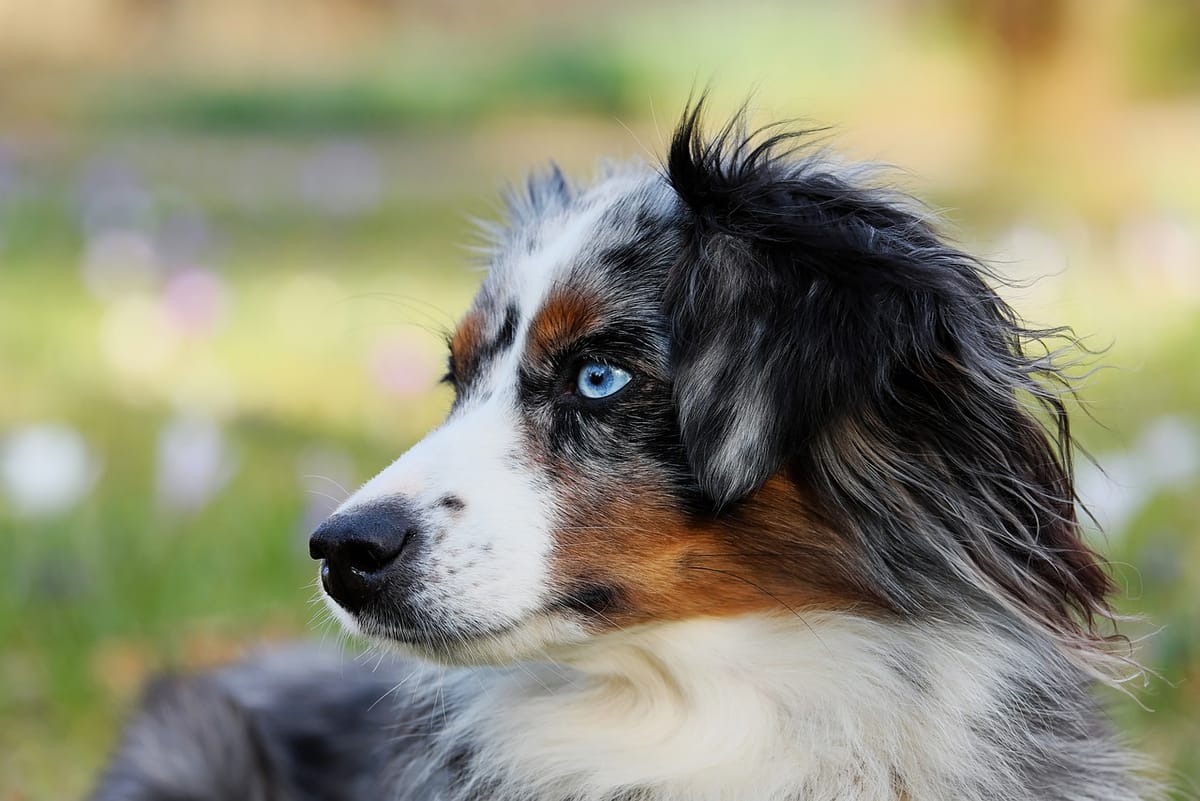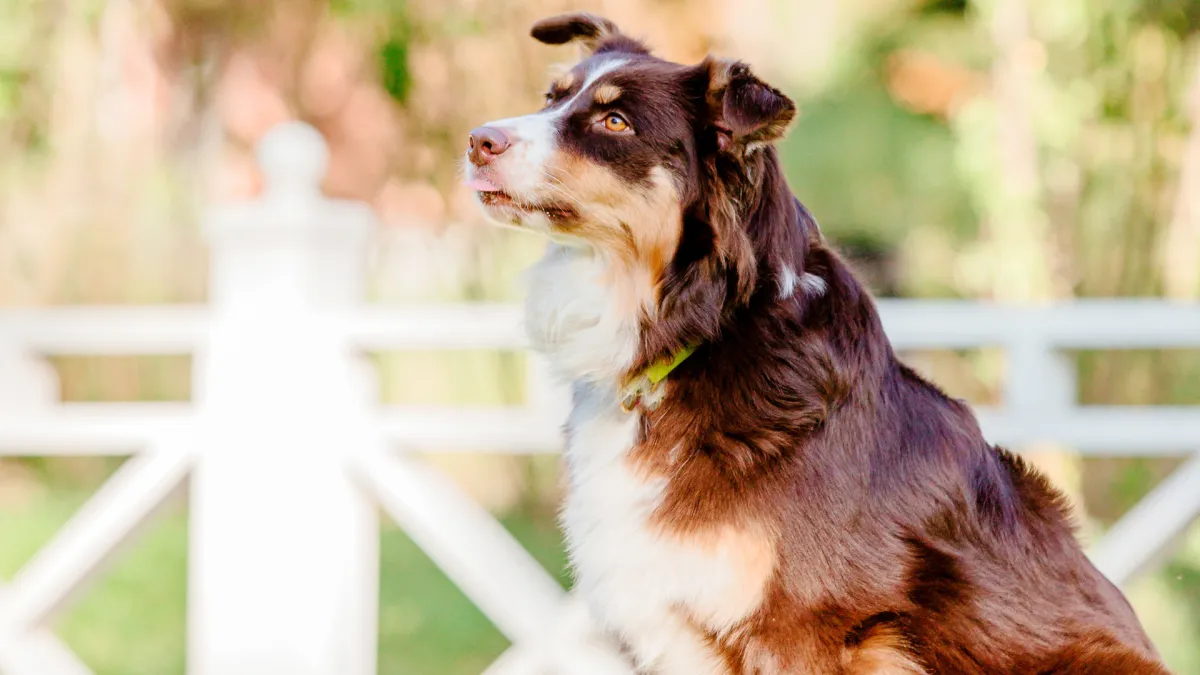Australian Shepherds are medium-sized, well-balanced dogs that are known for their intelligence, loyalty, and energy. One of the most common questions that potential owners have is, "How big do Australian Shepherds get?" The answer to this question varies based on several factors, including gender, genetics, and diet.
Male Australian Shepherds typically range from 20-23 inches in height and 55-70 pounds in weight. Females, on the other hand, are slightly smaller, standing at around 18-21 inches tall and weighing between 40-55 pounds. While these are general ranges, it's important to note that each individual dog may fall outside of these parameters based on their specific genetics and lifestyle. Understanding how big Australian Shepherds can get is an important consideration for potential owners, as it can impact factors such as living space and exercise requirements.

Understanding the Australian Shepherd Breed
The Australian Shepherd, also known as the Aussie, is a medium-sized dog breed that was originally developed in the western United States as a herding dog. Despite its name, the breed did not originate in Australia. It is believed to have been developed from various European herding breeds that were brought to the United States by Basque and Spanish shepherds.
Aussies are highly intelligent and have strong herding instincts. They are often used as working dogs, but also make excellent family pets due to their friendly and loyal temperament. They are known for their distinctive bob-tails and come in a variety of colors, including blue merle, black, red merle, and red.
The breed is recognized by the American Kennel Club (AKC) and is highly regarded for its intelligence and versatility. Aussies are often used in various dog sports, including agility, obedience, and herding trials.
One unique trait of the Australian Shepherd is its tendency to have heterochromia, or two different-colored eyes. This trait is often referred to as "ghost eye" and is considered a desirable trait in the breed standard.
Overall, the Australian Shepherd is a highly intelligent and versatile breed with a friendly and loyal temperament. They make excellent family pets and working dogs, and are highly regarded in the dog community for their intelligence and herding instincts.
Size and Weight of Australian Shepherds
Australian Shepherds are medium-sized dogs that come in a range of sizes, depending on their breed and gender. The average adult size of an Australian Shepherd is between 18 and 23 inches tall from paws to shoulders, and they typically weigh between 40 and 60 pounds. Male Australian Shepherds are generally larger than females, with males weighing up to 15 pounds more and standing up to 2 inches taller.

It is important to note that these are just general guidelines, and individual dogs may fall outside of these ranges. Factors such as genetics, diet, and exercise can all impact a dog's growth rate and body condition score.
If you are considering adopting an Australian Shepherd, it is important to research the specific breed and lineage to get a better idea of what size and weight to expect. Additionally, regular check-ins with a veterinarian can help ensure that your dog is growing and developing at a healthy rate.
Growth and Development of Australian Shepherds
Australian Shepherds are a medium-sized breed that can grow to be between 18 and 23 inches tall and weigh anywhere from 40 to 65 pounds. The growth rate of Australian Shepherds is relatively fast, and they typically reach their full adult size by around 12-16 months of age.
During the puppy stage, Australian Shepherds can gain weight at a rate of 2-3 pounds per week. By six months of age, a male Australian Shepherd can weigh between 40 and 46 pounds, while a female Australian Shepherd should weigh around 30 to 35 pounds.
The growth and development of Australian Shepherds can be influenced by genetics, diet, and exercise. It is essential to provide a balanced diet and regular exercise to ensure proper growth and development.
As Australian Shepherds mature, their energy levels tend to decrease, and they become more calm and collected. They reach their full adult size and weight at around 12-16 months of age, although some may continue to grow until they are two years old.
Overall, Australian Shepherds are a healthy and robust breed that can live up to 15 years with proper care and nutrition.
Health Issues and Concerns
Australian Shepherds are known to be a relatively healthy breed, but like all dogs, they can still be prone to certain health issues. Here are some of the health concerns that owners should be aware of:
- Joint Dysplasia: Australian Shepherds are prone to hip dysplasia and elbow dysplasia, which can cause pain and discomfort. Surgical intervention may be necessary in severe cases.
- Eye Problems: Cataracts and other eye issues are common in Australian Shepherds. Owners should have their dogs examined regularly by a veterinary ophthalmologist to catch any issues early and ensure the best possible treatment.
- Epilepsy: Epilepsy is a neurological disorder that can cause seizures. While it is not common in Australian Shepherds, it can still occur.
- Cancer: Like all dogs, Australian Shepherds can develop cancer. Some of the most common types of cancer in this breed include lymphoma and hemangiosarcoma.
- MDR1 Gene Mutation: Some Australian Shepherds carry a gene mutation that makes them more sensitive to certain medications, including some commonly used heartworm preventatives. Owners should have their dogs tested for this mutation and be aware of which medications to avoid.
- Anxiety: Australian Shepherds are known for their high energy levels and can become anxious if they don't get enough exercise and mental stimulation. This can lead to destructive behaviors and other issues that can impact their quality of life.
Owners should work closely with their veterinarian to ensure that their Australian Shepherd stays healthy and happy. Regular check-ups, appropriate exercise and nutrition, and prompt treatment of any health issues can help ensure a long and happy life for these beloved dogs.
Nutrition and Diet for Australian Shepherds
Proper nutrition is essential for the health and well-being of Australian Shepherds. These active dogs require a balanced diet that provides them with the energy and nutrients they need to maintain their active lifestyle. A diet that is high in protein and carbohydrates is ideal for Australian Shepherds.
Protein is essential for muscle growth and repair, which is especially important for active breeds like Australian Shepherds. A diet that is high in protein can help them maintain their muscle mass and energy levels. Carbohydrates provide the energy that Australian Shepherds need to stay active and alert.
When choosing a diet for your Australian Shepherd, it is important to look for high-quality, nutrient-dense foods. Avoid foods with fillers or by-products since these ingredients don't give your Australian Shepherd any useful vitamins and may cause them to feel full but be malnourished.
Australian Shepherds should be fed two meals daily with foods that are high in vitamins and minerals. It is important to avoid overfeeding them, as they are prone to obesity. A food calculator and feeding guide can help you determine the appropriate amount of food to feed your Australian Shepherd based on their weight, body condition, and activity level.
In summary, a balanced diet that is high in protein and carbohydrates is essential for the health and well-being of Australian Shepherds. Providing them with high-quality, nutrient-dense foods in the appropriate amounts can help them maintain their energy levels and muscle mass, while avoiding obesity and other health problems.
Training and Exercise Requirements
Australian Shepherds are an active breed that require plenty of exercise to keep them mentally and physically stimulated. They are energetic and intelligent dogs who need daily exercise to prevent boredom and destructive behavior. A lack of exercise can lead to obesity and other health problems, so it is important to provide your Aussie with plenty of opportunities to burn off energy.

The minimum amount of exercise an Australian Shepherd needs is 1 to 2 hours daily. This can include walks, playtime, interactive games, and activities that challenge their agility and intelligence. Aussies are known for their love of frisbee, so playing fetch is a great way to provide them with exercise while also bonding with your pet.
Training is also an important aspect of an Australian Shepherd's life. They are intelligent dogs who are eager to please and need mental stimulation. Basic obedience training should begin at a young age and should include commands such as sit, stay, come, and heel. Aussies also excel at more advanced training, such as agility, herding, and search and rescue.
It is important to set rules and boundaries for your Australian Shepherd from a young age. They are smart dogs who need structure and consistency to thrive. Positive reinforcement training methods, such as treats and praise, work best with Aussies.
Overall, Australian Shepherds are an active breed that require plenty of exercise and mental stimulation. Training should begin at a young age and should include both basic obedience and more advanced activities. By providing your Aussie with plenty of exercise and training, you can ensure that they live a happy and healthy life.
Physical Characteristics of Australian Shepherds
Australian Shepherds are medium-sized dogs with a balanced and muscular build. They have a double coat with a medium texture that can be straight or wavy. The outer layer of their coat is longer and water-resistant, while the undercoat is soft and fluffy. Australian Shepherds can come in a variety of coat colors, including black, red, blue merle, and red merle. They may also have white markings or tan points.
One distinctive feature of some Australian Shepherds is their blue eyes. However, not all Australian Shepherds have blue eyes, and even those that do may have one or both eyes that are a different color. The merle gene, which can cause variations in coat color and eye color, is common in Australian Shepherds.
Overall, Australian Shepherds are a well-proportioned breed with a strong and athletic appearance. Their physical characteristics are designed for their original purpose as herding dogs, with a focus on agility, speed, and endurance.
Australian Shepherds as Pets
Australian Shepherds make great pets for active families who have lots of time to dedicate to their furry friend. They are known for their high energy levels and need for exercise, so they are best suited for pet parents who can provide them with plenty of physical activity, such as long walks, hikes, and runs.
In addition to being great family pets, Australian Shepherds can also make excellent therapy and service dogs. They are intelligent, loyal, and obedient, which makes them easy to train.
When it comes to neutering, it is recommended that pet parents wait until their Australian Shepherd is at least six months old before having them neutered. This allows them to fully develop and reduces the risk of certain health problems later in life.
Overall, Australian Shepherds are a wonderful breed for families who are looking for an active, intelligent, and loyal pet. With proper training and socialization, they can make great therapy and service dogs as well.
History and Origin of Australian Shepherds
The history and origin of the Australian Shepherd breed is not entirely clear-cut. Despite its name, the breed did not originate in Australia. It was developed in the United States, specifically in California, during the 19th century. However, some of the breed's ancestors may have come from Europe, particularly the Basque region of Spain, where Basque shepherds used dogs to herd their flocks.
Another theory suggests that Australian Shepherds were bred from dogs used by Spanish shepherds in the southwestern United States and Mexico. These dogs were then crossed with other breeds, such as Blue Heelers and New Mexican Shepherds, to create the Australian Shepherd we know today.
The breed's popularity grew in the mid-20th century, when rodeos and horse shows became popular. Australian Shepherds were used as trick dogs, performing various stunts and entertaining audiences.
Despite their name, Australian Shepherds are not recognized as a distinct breed in Australia. The breed was officially recognized in the United States in 1957 with the formation of the Australian Shepherd Club of America.
Today, Australian Shepherds are popular pets and working dogs. They are known for their intelligence, loyalty, and high energy levels. They are also used as therapy dogs, search and rescue dogs, and in various other roles that require their intelligence and agility.

Breed Variations and Related Breeds
Australian Shepherds are a unique breed with a distinctive look and temperament. However, there are a few variations within the breed that can affect their size and appearance.
One variation is between male and female Australian Shepherds. Males tend to be larger and heavier than females, with an average weight of 50-65 pounds and a height of 20-23 inches. Females, on the other hand, are slightly smaller, with an average weight of 40-55 pounds and a height of 18-21 inches.
Another variation is the Miniature American Shepherd, which is a smaller version of the Australian Shepherd. These dogs have a similar appearance and temperament to their larger counterparts, but they are typically only 13-18 inches tall and weigh between 20-40 pounds.
There are also several breeds that are closely related to the Australian Shepherd. Collies, for example, share many of the same herding instincts and are also known for their intelligence and loyalty. Other dog breeds that are similar to the Australian Shepherd include the Border Collie, the Shetland Sheepdog, and the Welsh Corgi.
Overall, while Australian Shepherds have a unique look and personality, there are several variations and related breeds that share similar traits and characteristics.
Choosing a Breeder for Australian Shepherds
When looking for a breeder for an Australian Shepherd, it is important to do thorough research to ensure that you are getting a healthy and well-bred dog. There are several terms that you should be familiar with when choosing a breeder:
- Backyard breeder: This refers to someone who breeds dogs without proper knowledge or care for the breed. They often do not health test their dogs or have a breeding plan in place.
- Puppy mill: These are large-scale breeding operations that prioritize profit over animal welfare. The dogs are often kept in poor conditions and suffer from health problems.
- Reputable breeder: This is a breeder who is knowledgeable about the breed, health tests their dogs, and has a breeding plan in place to produce healthy and well-tempered puppies.
To find a reputable breeder, it is important to do your research and ask questions. Look for breeders who are members of the United States Australian Shepherd Association or other reputable breed clubs. Ask to see health clearances for the parents of the puppies, and ask about the breeder's breeding plan and socialization practices.
Avoid buying a puppy from a pet store or online, as these sources often come from puppy mills or backyard breeders. A reputable breeder will want to meet you and ensure that their puppies are going to a good home.
Overall, choosing a reputable breeder is essential to ensuring that your Australian Shepherd is healthy and well-bred. Do your research and ask questions to find a breeder who is knowledgeable and cares about the breed.
Want to know more about Australian Shepherds?









